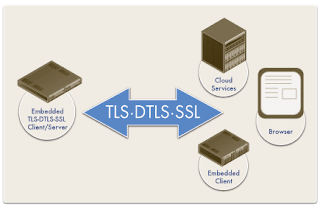Two FortiGates in a VRRP domain
I still
remember when I wrote the HSRP,
VRRP and GLBP post. I was studying for the CCNP
Route exam. In fact, this post is the most viewed in my blog.
I learnt how these First Hop Redundancy Protocols (FHRP) work. I
learnt VRRP works with the multicast IP address 224.0.0.18 and IP
protocol number 112. It was great to know there were protocols for
high-availability routing. Therefore, we can configure two routers
with the same IP address, which is the default gateway for users, and
if one of them fails, the other one takes over.
Last week,
I’ve been configuring
two FortiGates in a VRRP domain because I’ve needed high
availability between different models of firewalls. I know the best
architecture is a cluster with the same model of firewalls but when
the project requires high availability with different model, we have
to look for a solution. The configuration is easy. We have to enable
vrrp-virtual-mac on the port, and set the Virtual IP address. In
addition, we should set a higher priority number for the primary
FortiGate and a lower priority number for the backup FortiGate.
 |
| Configuring two FortiGates in a VRRP domain |
If
we use FortiGate firewalls for secure services such as HTTP and HTTPS
services, we’ll also want high
availability for these services. Therefore, Virtual IPs will have to
be configured in both firewalls. At first, if
we configure the same Virtual IP in both firewalls, there will be IP
duplicated and it doesn’t work properly. However, FortiOS 6.0
already supports failover
of IPv4 firewall VIPs and IP Pools.
Thanks to a new proxy ARP setting, we’ll
be able to map VIP to each router’s Virtual MAC (VMAC).
 |
| Failover of IPv4 firewall VIPs |
Another
interesting setting is the VRRP
load balancing,
which is useful
when we want both firewalls are processing traffic. Accordingly,
one
firewall is the primary router of one subnet
and the other one
is the primary router of the other subnet.
However, if one firewall fails, all traffic
fails over to the other one that is still operating. From
my point of view, Active/Active configuration is not the best design
but it could be useful in some architectures.
 |
| VRRP load balancing |
All
of these settings are configured using the CLI. There is no way to
configure VRRP using the GUI in FortiGate. Consequently,
the routing table have also to be got using the CLI. The command “get
router info vrrp” show the status of
VRRP. For instance, we can know what firewall is the master router
and what is the backup router. We can also know the Virtual Router IP
(vrip), the Virtual Router
Group (vrgrp), etc, etc.
 |
| VRRP Routing Table |
VRRP is a
standard protocol thus we can also configure a VRRP domain between a
firewall and a router. For example, we could configure a VRRP domain
between a FortiGate firewall and a Cisco router. This is a great
advantage of using standard protocols instead of private protocols
such as HSRP or GLBP.
Your
comments are welcome!!









Commentaires
Enregistrer un commentaire